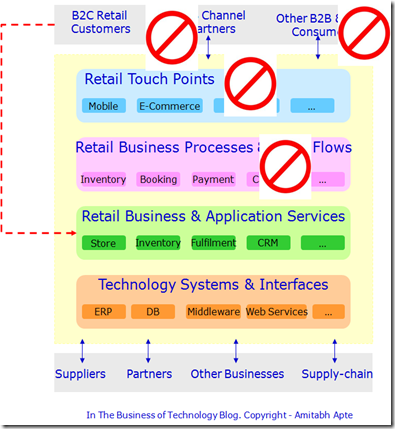
Microsoft and The Telegraph hosted the “Cloud Computing” Silver Lining event earlier this evening in London. It was a good mix of panel discussions, round-table and networking event. It was hosted at one of the City’s most prestigious landmarks – The Gherkin which with its magnificent views from the 40th floor across the London skyline, was the perfect location to discuss the matters of “Cloud” computing. I was one of the fortunate 50 people who received the invite to listen and engage with a panel of Microsoft, Telegraph and other Industry speakers. I am trying to summarise some of the key thoughts from the evening in this blog post. The headline message which I would like to give here is that, “In Cloud Computing, Business Value Matters, Technology Does Not”
Cloud Computing is about Business Innovation – John Jester of Microsoft noted that, Cloud Computing is turning a new corner in 2011. CIOs, CTOs are no longer adopting Cloud Computing purely for cost savings purposes. Increasing number of organisations are now turning to Cloud Computing to gain new capabilities to make business successful. Cloud Computing is leading to new customer engagement models externally while also boosting new ways of employee engagement internally. He cited example of Global Microsoft CIO Summit to drive home the point. While in 2008 most CIOs reported CEO mandate of Cost Reduction, in 2010 most CIOs reported that, now their CEOs are demanding IT to play an Innovation Role. CEOs are now demanding CIOs and CTOs to drive revenue generation and maximisation opportunities. And Cloud Computing is a leading enabler of these innovative business models.

Cloud Computing Liberates IT Consumers – Dr James Bellini, Author and Futurologist commented on how the Cloud Computing paradigm is working on end user computing levels. He likened the Cloud Computing phenomenon as an enabler to free employees to become individuals again and approach and use IT as tool which which liberated not locked them in. He predicted that, “Work prisons of 20th century will disappear by 2020 thanks to the Cloud Computing phenomenon“. But Cloud Computing is not something entirely new. IT industry has seen a number of variations and forms of this over past decades. Close to my heart, the Airline industry has been a pioneer of Cloud Computing for a number of decades when it started to consume the Airline Booking processes per transaction model. Large mainframe operators such as IBM and Unisys served the airlines per Mips based on their consumption. On consumer level, Microsoft Hotmail Service has been in place since 1996 which is prime example of email and collaboration service in cloud. This was one of the question which I posed to the panel.
So What is New about Cloud Computing Now? – Probably nothing is new in terms of concept. As I outlined in few examples above, the paradigm is around for decades. The major difference driving the adoption (and to some extent Hype) is that Industry has finally caught up with Technology, Tools and Instrumentation required to make Cloud Computing work at mass scale. We agreed at the round-table as well as during networking session that two factors have contributed in a major way to drive the Cloud uptake and popularity.
- As John Jester of Microsoft noted, “Anyone is now Connected Anywhere“. The power of network makes cloud consumption easy for large end user computing as well as B2C markets
-
Secondly, as I theorise, the Mobile and Tablet devices have finally crossed the threshold of affordability, intuitiveness, usability and desirability which has enabled business models which demand mass consumption of IT services of various forms on the go
-
Thirdly as Phill Robinson, CEO, IRIS and Alan Lee-Bourke, CIO, The Wise Group noted the Cloud Computing is a better economic model for enterprises. It allows CIOs and CTOs to pass on the worry of say Server Management, Patching, Wiring, Cabling, Backing up etc to the likes of Microsoft and Fujitsu while they focus on tasks of higher business value for their organisations. Alan for instance noted emphasis on Data Modeling, Reuse and Effective Churn of Information to help business move forward.
Major Cloud Computing Adoption Challenges – Matt Warman of The Telegraph noted and the panel and round-table acknowledged that, Security and Data Integrity are some of the biggest blockers for free-flowing Cloud adoption. Access and Control of Information is a major source of wealth creation of 21’st century hence it is little surprise that data and information assets are targeted by hackers and groups with not so noble intent. But we believe that collectively as industry and individually as responsible organisations these aspects will be sorted with priority. Some of the message from Microsoft Cloud Forum demanded Industry players to work closer together on security standards. While there are now also demands for Government to work a lot closer with Industry on boosting Public Sector Cloud Adoption.
The other notable issue raised was difference between commercial models for applications in cloud computing environment vs the collaboration services in cloud. For instance operational, governance and commercial model for making Microsoft Azure and Amazon web services work are of different complexity than say making Office 365 work for enterprise. Both present respective set of challenges but operating model for Cloud in these instances are different.
To summarise, momentum seems to be gathering around the fact that Cloud is now seen to enable business rather than just technology development. A great debate at a great location. Many thanks to Matt Warman of the Telegraph and John Jester of Microsoft for hosting a fantastic event!



